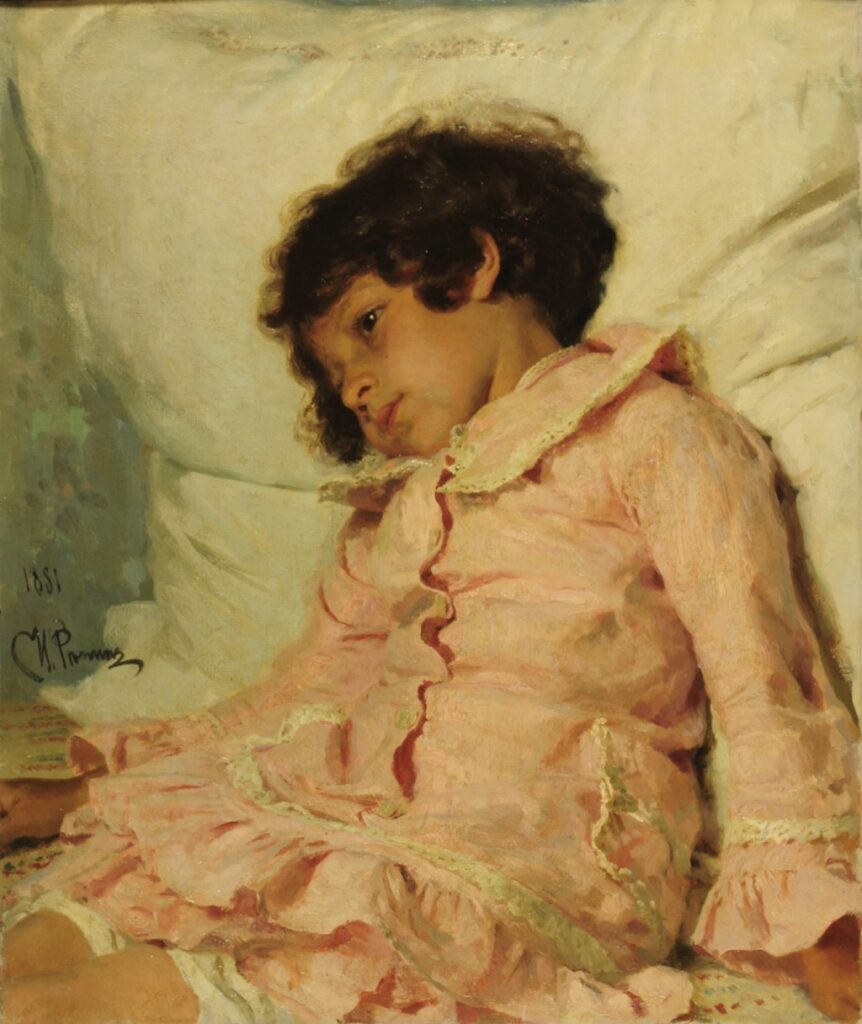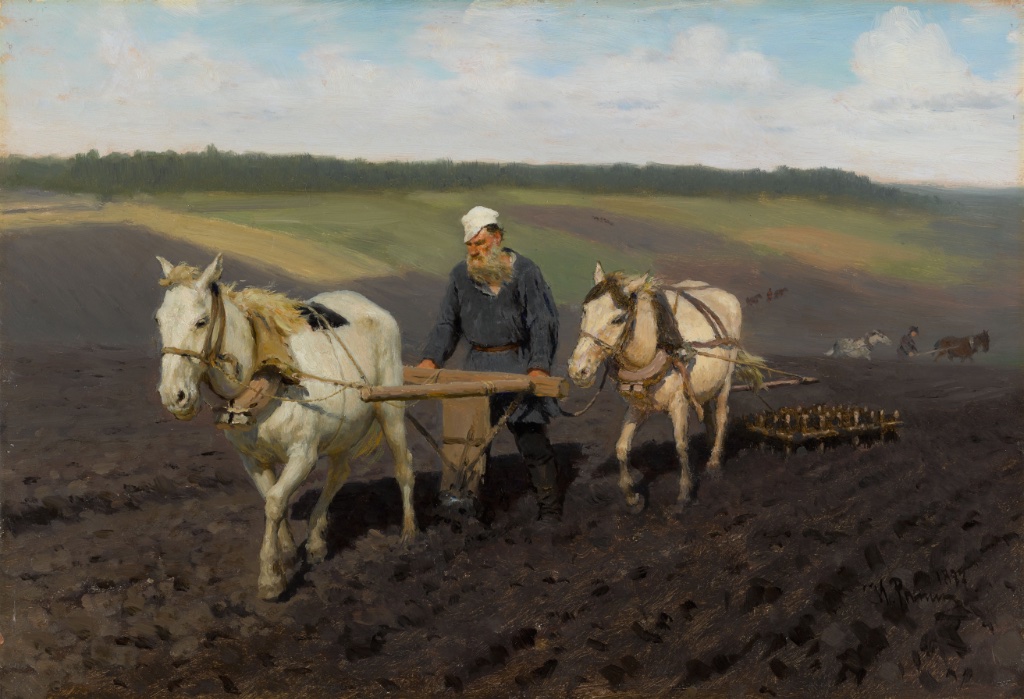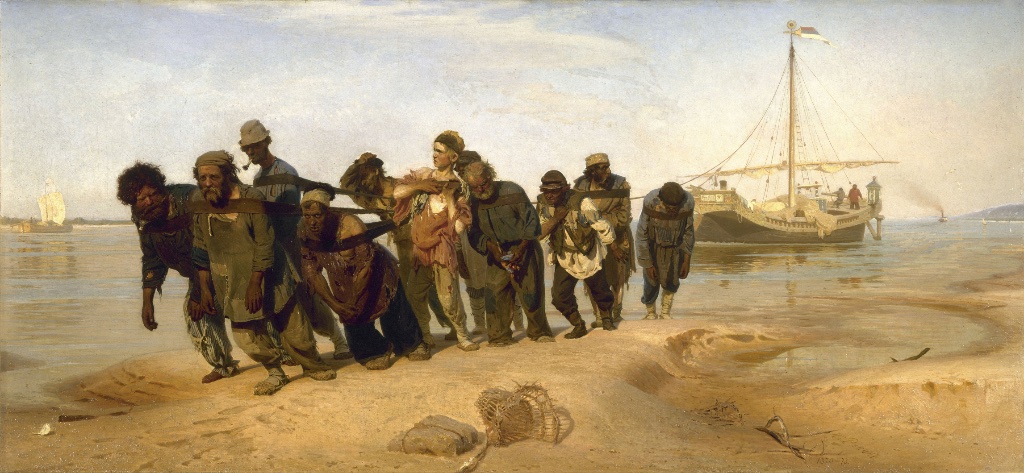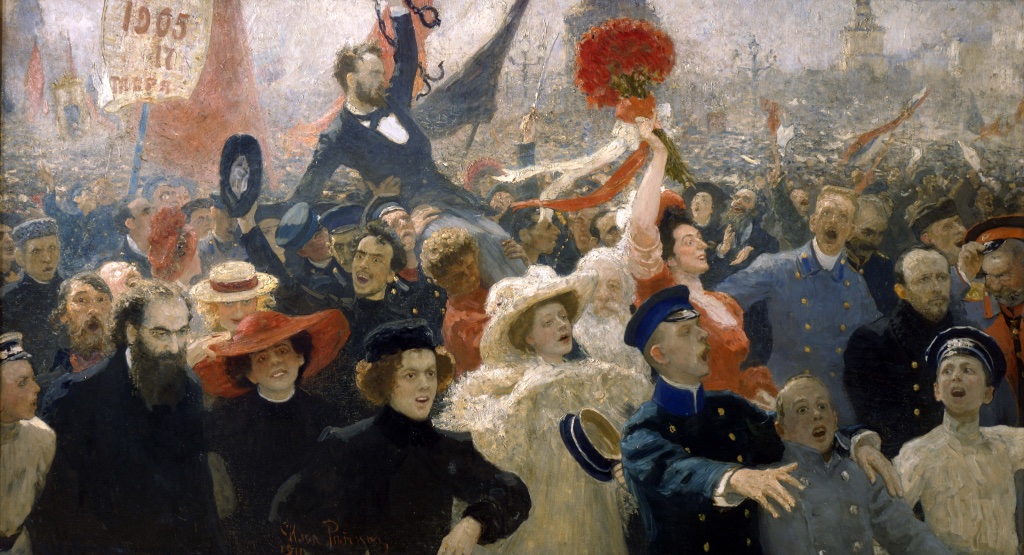The exhibition “Ilya Repin: Painting the Soul of Russia,” at the Petit Palais in Paris, serves not only as a retrospective of the work of the great realist painter but also as a sort of overview of nearly a century of his country’s history.
History is not just a backdrop here, however. During his long career, Repin, who was born in Chuguyev, Ukraine, in 1844, and died in 1930, lived through Russia’s turbulent 19th-century social reforms, two revolutions (in 1905 and ’17), World War I and the birth of the Soviet Union. He knew many of the players in these upheavals, from his friend Leo Tolstoy to Czars Alexander III and Nicolas II, both of whom he painted. Through his work and his association with the Peredvizhniki (The Wanderers), an anti-academic, socially aware art movement, he took often-provocative stands on the big issues of his day. As a teacher, writer and well-known artist, his work and opinions were well-known to the public.
Repin seems to have excelled at every type of painting. His portraits are masterly, from the touching “Fisherman’s Daughter” (1874), painted en plein air in Normandy (Repin lived in France for a few years and returned several times), in which the girl’s raggedy jacket is depicted in fine detail while her shy, downcast face is delicately and sympathetically treated, to the magnificent portrait of seascape painter Alexey Bogolyubov (1882), with its freer brushstrokes and contemplative expression, and his romantic portrait of the handsome, tortured anti-czarist, anti-Bolshevik Russian writer and playwright Leonid Andreyev. Repin’s lively portraits of his own children, which could so easily have been saccharine, are anything but (see image at the top of the page). Then there are his famous portraits of Tolstoy and composer Modest Mussorgsky.
His monumental works were great successes, notably the famous “Ivan the Terrible and His Son Ivan” (1885), depicting the deranged czar, who lived from 1530 to ’84, holding the bloodied head of his son, whom he has just murdered (filicide is just one of many versions of what really killed the czarevitch). Repin was inspired to paint it by the assassination of Czar Alexander II in 1881. After the painting was slashed by a visitor to the Tretyakov Gallery in 1913, it was attacked again in 2018 and no longer travels, but the exhibition includes a display on the subject.
Other monumental works, populated with crowds of individuated subjects, offered social commentary. “Barge Haulers on the Volga” (1870-73), which helped establish Repin’s reputation, drew attention to the plight of men used as beasts to pull barges along the river.
“Alexander III Receiving Rural District Elders in the Yard of the Petrovsky Palace in Moscow” (1886) was commissioned to commemorate the coronation of Alexander III, but Repin surrounds him with ordinary people of every stripe, from peasants to nobles (relegated to the background of the painting, where the artist can also be seen holding his sketchbook).
Repin was a great supporter of reform under the czarist regime, but after the revolution, he repudiated the Bolsheviks and lived out the end of his life in Finland, where he had taken up residence in 1890. In spite of the artist’s political views, Stalin tried to lure him back home, presumably because of his fame and prestige, but Repin refused.
This exhibition will end on January 23. Do try to get there to learn about this fascinating, talented painter and humanist, an artist of his time who has often been called the Tolstoy of the Russian art world.
Favorite



